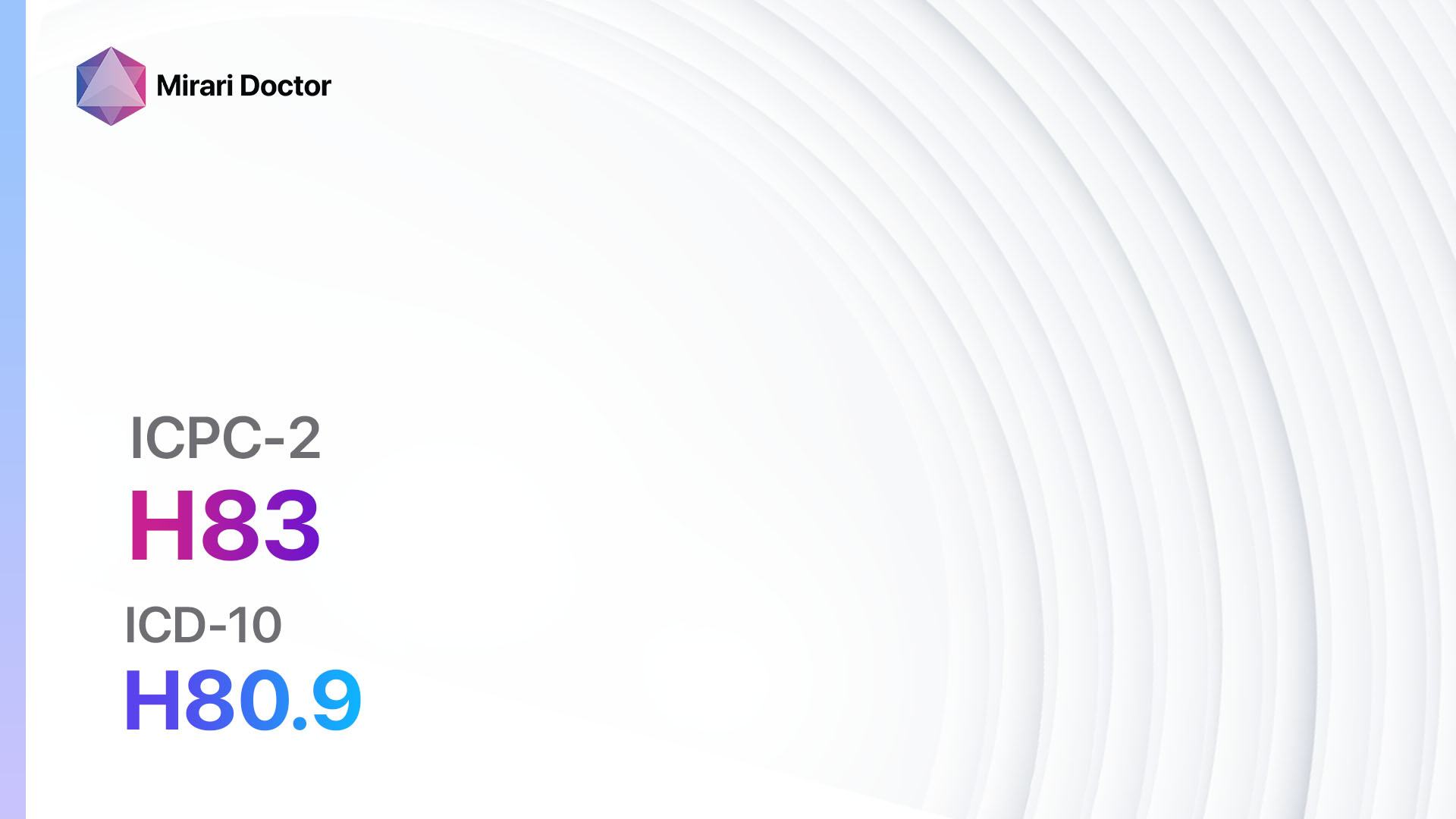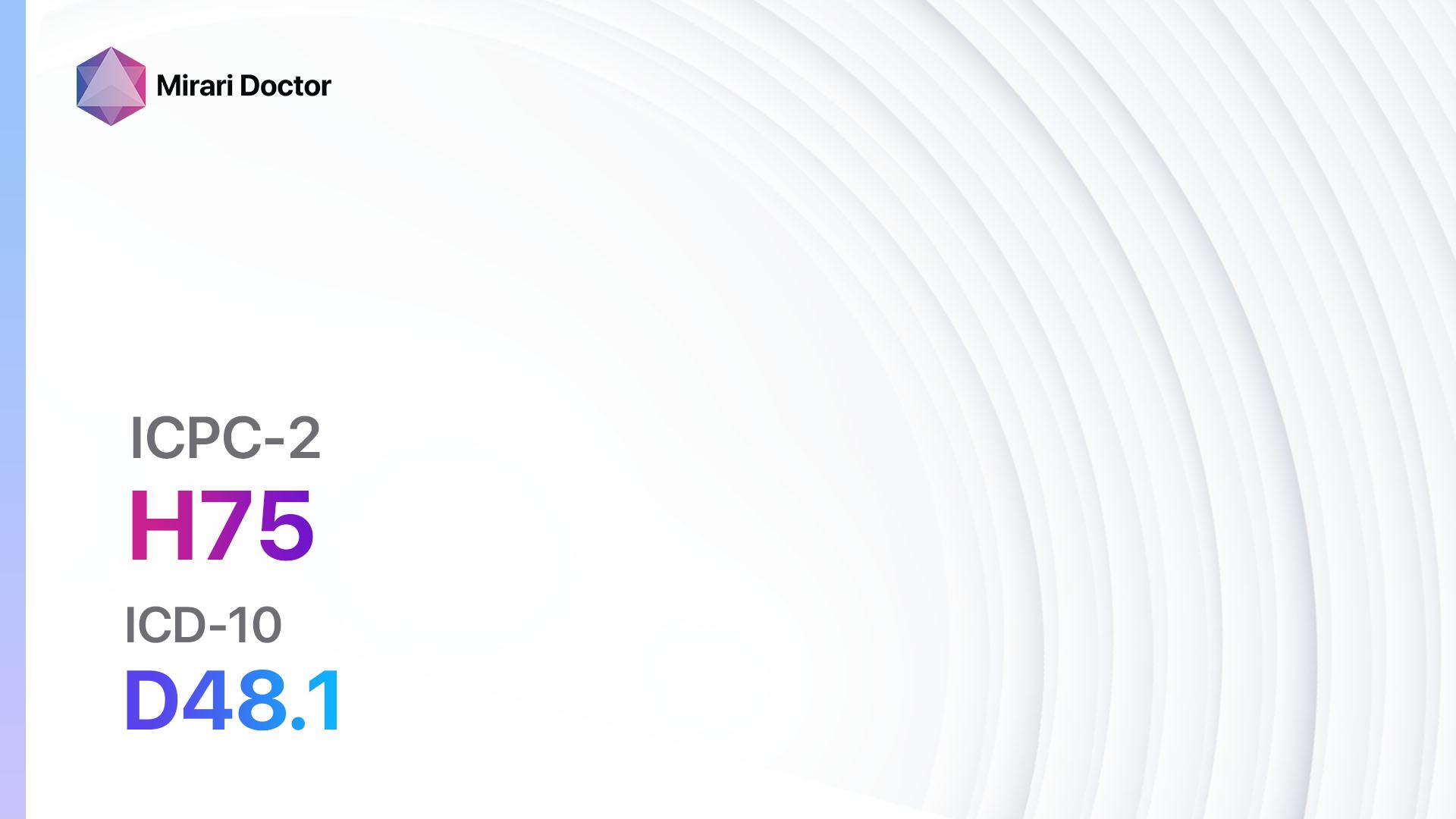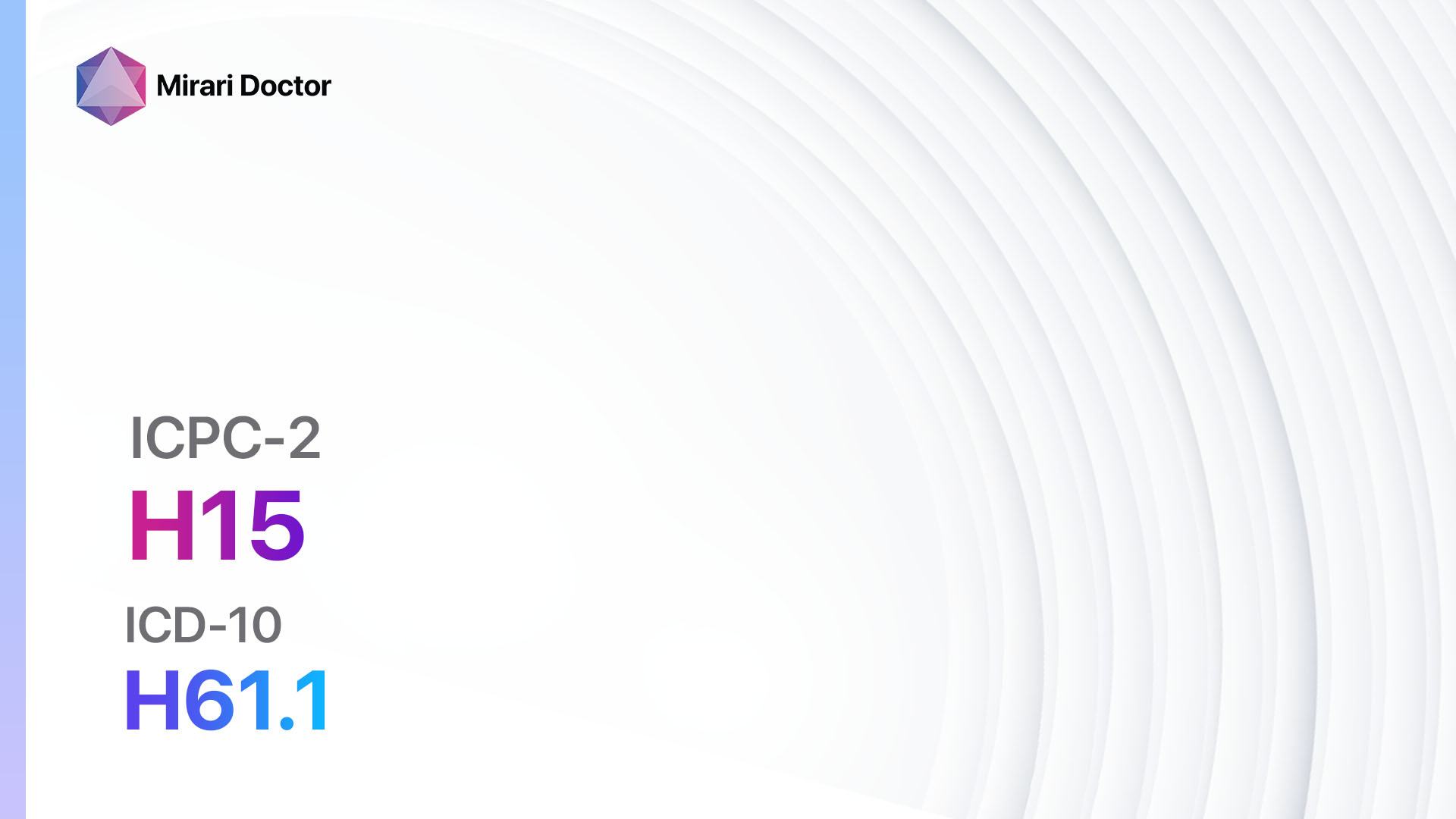
Introduction
Vertiginous syndrome, also known as dizziness, is a common symptom that can be caused by various underlying conditions. It is characterized by a sensation of spinning or unsteadiness, often accompanied by nausea, vomiting, and difficulty maintaining balance[1]. The aim of this guide is to provide healthcare professionals with a comprehensive overview of the diagnostic steps, possible interventions, and patient education for vertiginous syndrome.
Codes
Symptoms
- Vertigo: A spinning or whirling sensation, often described as feeling like the room is spinning[4].
- Nausea and vomiting: Feeling sick to the stomach and vomiting[5].
- Imbalance and unsteadiness: Difficulty maintaining balance and coordination[6].
- Tinnitus: Ringing or buzzing in the ears[7].
- Hearing loss: Partial or complete loss of hearing[8].
Causes
- Benign paroxysmal positional vertigo (BPPV): Dislodged calcium crystals in the inner ear[9].
- Meniere’s disease: Buildup of fluid in the inner ear[10].
- Vestibular neuritis: Inflammation of the vestibular nerve.
- Labyrinthitis: Inflammation of the inner ear.
- Migraine-associated vertigo: Vertigo associated with migraines.
- Medications: Certain medications can cause vertigo as a side effect.
- Other causes: Head injury, stroke, tumors, and other neurological conditions.
Diagnostic Steps
Medical History
- Gather information about the onset, duration, and frequency of vertigo episodes.
- Ask about associated symptoms such as nausea, vomiting, hearing loss, or tinnitus.
- Inquire about any recent head injuries, infections, or changes in medication.
- Assess for any risk factors such as a family history of vertigo or migraines.
Physical Examination
- Perform a comprehensive physical examination, including a neurological examination.
- Assess for any signs of nystagmus (involuntary eye movements) or abnormal eye movements.
- Evaluate balance and coordination through various tests, such as the Romberg test.
- Check for any abnormalities in the ear, such as redness, swelling, or discharge.
Laboratory Tests
- Complete blood count (CBC): To rule out anemia or infection.
- Thyroid function tests: To assess thyroid function, as thyroid disorders can cause vertigo.
- Blood glucose levels: To rule out hypoglycemia, which can cause dizziness.
- Lipid profile: To assess cholesterol levels, as high cholesterol can increase the risk of vertigo.
- Electrolyte levels: To check for any imbalances that may contribute to vertigo.
Diagnostic Imaging
- Magnetic resonance imaging (MRI): To visualize the brain and inner ear structures.
- Computed tomography (CT) scan: To assess for any structural abnormalities or tumors.
- Electronystagmography (ENG): To evaluate eye movements during positional changes.
- Videonystagmography (VNG): To assess eye movements using video recording.
- Audiometry: To evaluate hearing loss and assess the function of the inner ear.
Other Tests
- Dix-Hallpike maneuver: A positional test used to diagnose benign paroxysmal positional vertigo (BPPV).
- Caloric testing: A test that involves irrigating the ear canal with warm or cold water to assess vestibular function.
- Posturography: A test that measures balance and stability using a force platform.
- Vestibular evoked myogenic potentials (VEMP): A test that assesses the function of the otolithic organs in the inner ear.
Follow-up and Patient Education
- Schedule follow-up appointments to monitor the effectiveness of interventions and adjust treatment if necessary.
- Provide patient education on the underlying cause of vertigo and the importance of adherence to treatment.
- Educate patients on lifestyle modifications and strategies to manage vertigo episodes, such as avoiding triggers and maintaining a healthy diet and exercise routine.
- Encourage patients to seek medical attention if symptoms worsen or new symptoms develop.
Possible Interventions
Traditional Interventions
Medications:
Top 5 drugs for Vertiginous syndrome:
- Meclizine (Antivert):
- Cost: $10-$30 for a month’s supply.
- Contraindications: Hypersensitivity to meclizine or related medications.
- Side effects: Drowsiness, dry mouth, blurred vision.
- Severe side effects: Irregular heartbeat, difficulty urinating.
- Drug interactions: Alcohol, sedatives, tranquilizers.
- Warning: May cause drowsiness, avoid driving or operating machinery.
- Betahistine (Serc):
- Cost: $20-$50 for a month’s supply.
- Contraindications: Pheochromocytoma, bronchial asthma.
- Side effects: Upset stomach, headache, dizziness.
- Severe side effects: Allergic reactions, low blood pressure.
- Drug interactions: None reported.
- Warning: Use with caution in patients with peptic ulcers or asthma.
- Dimenhydrinate (Dramamine):
- Cost: $5-$15 for a month’s supply.
- Contraindications: Asthma, narrow-angle glaucoma.
- Side effects: Drowsiness, dry mouth, blurred vision.
- Severe side effects: Irregular heartbeat, difficulty urinating.
- Drug interactions: Alcohol, sedatives, tranquilizers.
- Warning: May cause drowsiness, avoid driving or operating machinery.
- Scopolamine (Transderm Scop):
- Cost: $30-$60 for a month’s supply.
- Contraindications: Glaucoma, urinary retention.
- Side effects: Dry mouth, blurred vision, drowsiness.
- Severe side effects: Rapid heartbeat, hallucinations.
- Drug interactions: Alcohol, sedatives, tranquilizers.
- Warning: Apply the patch behind the ear at least 4 hours before the desired effect.
- Diazepam (Valium):
- Cost: $10-$30 for a month’s supply.
- Contraindications: Severe respiratory insufficiency, sleep apnea.
- Side effects: Drowsiness, dizziness, confusion.
- Severe side effects: Respiratory depression, dependence.
- Drug interactions: Alcohol, sedatives, tranquilizers.
- Warning: May cause drowsiness, avoid driving or operating machinery.
Alternative Drugs:
- Ginger (Zingiber officinale): Known for its antiemetic properties, ginger can help alleviate nausea associated with vertigo. Cost: $5-$10 for a month’s supply.
- Vitamin B6 (Pyridoxine): Some studies suggest that vitamin B6 may help reduce the frequency and severity of vertigo episodes. Cost: $5-$10 for a month’s supply.
- Ginkgo biloba: This herbal supplement may improve blood flow to the brain and inner ear, potentially reducing vertigo symptoms. Cost: $10-$20 for a month’s supply.
- Valerian root (Valeriana officinalis): Valerian root has calming properties and may help reduce anxiety associated with vertigo. Cost: $5-$10 for a month’s supply.
- Melatonin: Melatonin can help regulate sleep patterns and may be beneficial for patients with vertigo-related sleep disturbances. Cost: $5-$10 for a month’s supply.
Surgical Procedures:
- Vestibular rehabilitation therapy (VRT): A specialized form of physical therapy that aims to improve balance and reduce vertigo symptoms through exercises and maneuvers. Cost: $100-$200 per session.
- Endolymphatic sac decompression: A surgical procedure that involves removing a small piece of bone to relieve pressure in the inner ear. Cost: $5,000-$10,000.
- Labyrinthectomy: A procedure to remove the entire inner ear to eliminate vertigo symptoms. Cost: $10,000-$20,000.
- Vestibular nerve section: A surgical procedure that involves cutting the vestibular nerve to eliminate vertigo symptoms. Cost: $10,000-$20,000.
- Cochlear implant: In cases where severe hearing loss is present, a cochlear implant may be considered to improve hearing and reduce vertigo symptoms. Cost: $50,000-$100,000.
Alternative Interventions
- Acupuncture: May help alleviate vertigo symptoms by promoting blood flow and reducing inflammation. Cost: $60-$120 per session.
- Chiropractic care: Some patients report improvement in vertigo symptoms with chiropractic adjustments. Cost: $50-$100 per session.
- Herbal supplements: Certain herbs, such as ginger and ginkgo biloba, have been used traditionally to alleviate vertigo symptoms. Cost: Varies depending on the specific supplement.
- Yoga and meditation: These mind-body practices can help reduce stress and improve overall well-being, potentially reducing vertigo symptoms. Cost: $10-$20 per class.
- Physical therapy: In addition to vestibular rehabilitation therapy, general physical therapy exercises can help improve balance and reduce vertigo symptoms. Cost: $100-$200 per session.
Lifestyle Interventions
- Dietary modifications: Avoiding triggers such as caffeine, alcohol, and high-salt foods may help reduce vertigo symptoms. Cost: Varies depending on individual food choices.
- Stress management: Stress can exacerbate vertigo symptoms, so practicing stress-reduction techniques such as meditation or deep breathing exercises may be beneficial. Cost: Free or minimal cost.
- Adequate hydration: Dehydration can worsen vertigo symptoms, so ensuring proper hydration is important. Cost: Varies depending on access to clean drinking water.
- Regular exercise: Engaging in regular physical activity can improve overall balance and reduce the frequency and severity of vertigo episodes. Cost: Varies depending on individual preferences (e.g., gym membership, home exercise equipment).
- Adequate sleep: Getting enough sleep is important for overall health and may help reduce vertigo symptoms. Cost: Free or minimal cost.
It is important to note that the cost ranges provided are approximate and may vary depending on the location and availability of the interventions.
Mirari Cold Plasma Alternative Intervention
Understanding Mirari Cold Plasma
- Safe and Non-Invasive Treatment: Mirari Cold Plasma is a safe and non-invasive treatment option for various skin conditions. It does not require incisions, minimizing the risk of scarring, bleeding, or tissue damage.
- Efficient Extraction of Foreign Bodies: Mirari Cold Plasma facilitates the removal of foreign bodies from the skin by degrading and dissociating organic matter, allowing easier access and extraction.
- Pain Reduction and Comfort: Mirari Cold Plasma has a local analgesic effect, providing pain relief during the treatment, making it more comfortable for the patient.
- Reduced Risk of Infection: Mirari Cold Plasma has antimicrobial properties, effectively killing bacteria and reducing the risk of infection.
- Accelerated Healing and Minimal Scarring: Mirari Cold Plasma stimulates wound healing and tissue regeneration, reducing healing time and minimizing the formation of scars.
Mirari Cold Plasma Prescription
Video instructions for using Mirari Cold Plasma Device – H82 Vertiginous syndrome (ICD-10:H81)
| Mild | Moderate | Severe |
| Mode setting: 1 (Infection) Location: 0 (Localized) Morning: 15 minutes, Evening: 15 minutes |
Mode setting: 1 (Infection) Location: 0 (Localized) Morning: 30 minutes, Lunch: 30 minutes, Evening: 30 minutes |
Mode setting: 1 (Infection) Location: 0 (Localized) Morning: 30 minutes, Lunch: 30 minutes, Evening: 30 minutes |
| Mode setting: 2 (Wound Healing) Location: 0 (Localized) Morning: 15 minutes, Evening: 15 minutes |
Mode setting: 2 (Wound Healing) Location: 0 (Localized) Morning: 30 minutes, Lunch: 30 minutes, Evening: 30 minutes |
Mode setting: 2 (Wound Healing) Location: 0 (Localized) Morning: 30 minutes, Lunch: 30 minutes, Evening: 30 minutes |
| Mode setting: 3 (Antiviral Therapy) Location: 0 (Localized) Morning: 15 minutes, Evening: 15 minutes |
Mode setting: 3 (Antiviral Therapy) Location: 0 (Localized) Morning: 30 minutes, Lunch: 30 minutes, Evening: 30 minutes |
Mode setting: 3 (Antiviral Therapy) Location: 0 (Localized) Morning: 30 minutes, Lunch: 30 minutes, Evening: 30 minutes |
| Total Morning: 45 minutes approx. $7.50 USD, Evening: 45 minutes approx. $7.50 USD |
Total Morning: 90 minutes approx. $15 USD, Lunch: 90 minutes approx. $15 USD, Evening: 90 minutes approx. $15 USD, |
Total Morning: 90 minutes approx. $15 USD, Lunch: 90 minutes approx. $15 USD, Evening: 90 minutes approx. $15 USD, |
| Usual treatment for 7-60 days approx. $105 USD – $900 USD | Usual treatment for 6-8 weeks approx. $1,890 USD – $2,520 USD |
Usual treatment for 3-6 months approx. $4,050 USD – $8,100 USD
|
 |
|
Use the Mirari Cold Plasma device to treat Vertiginous syndrome effectively.
WARNING: MIRARI COLD PLASMA IS DESIGNED FOR THE HUMAN BODY WITHOUT ANY ARTIFICIAL OR THIRD PARTY PRODUCTS. USE OF OTHER PRODUCTS IN COMBINATION WITH MIRARI COLD PLASMA MAY CAUSE UNPREDICTABLE EFFECTS, HARM OR INJURY. PLEASE CONSULT A MEDICAL PROFESSIONAL BEFORE COMBINING ANY OTHER PRODUCTS WITH USE OF MIRARI.
Step 1: Cleanse the Skin
- Start by cleaning the affected area of the skin with a gentle cleanser or mild soap and water. Gently pat the area dry with a clean towel.
Step 2: Prepare the Mirari Cold Plasma device
- Ensure that the Mirari Cold Plasma device is fully charged or has fresh batteries as per the manufacturer’s instructions. Make sure the device is clean and in good working condition.
- Switch on the Mirari device using the power button or by following the specific instructions provided with the device.
- Some Mirari devices may have adjustable settings for intensity or treatment duration. Follow the manufacturer’s instructions to select the appropriate settings based on your needs and the recommended guidelines.
Step 3: Apply the Device
- Place the Mirari device in direct contact with the affected area of the skin. Gently glide or hold the device over the skin surface, ensuring even coverage of the area experiencing.
- Slowly move the Mirari device in a circular motion or follow a specific pattern as indicated in the user manual. This helps ensure thorough treatment coverage.
Step 4: Monitor and Assess:
- Keep track of your progress and evaluate the effectiveness of the Mirari device in managing your Vertiginous syndrome. If you have any concerns or notice any adverse reactions, consult with your health care professional.
Note
This guide is for informational purposes only and should not replace the advice of a medical professional. Always consult with your healthcare provider or a qualified medical professional for personal advice, diagnosis, or treatment. Do not solely rely on the information presented here for decisions about your health. Use of this information is at your own risk. The authors of this guide, nor any associated entities or platforms, are not responsible for any potential adverse effects or outcomes based on the content.
Mirari Cold Plasma System Disclaimer
- Purpose: The Mirari Cold Plasma System is a Class 2 medical device designed for use by trained healthcare professionals. It is registered for use in Thailand and Vietnam. It is not intended for use outside of these locations.
- Informational Use: The content and information provided with the device are for educational and informational purposes only. They are not a substitute for professional medical advice or care.
- Variable Outcomes: While the device is approved for specific uses, individual outcomes can differ. We do not assert or guarantee specific medical outcomes.
- Consultation: Prior to utilizing the device or making decisions based on its content, it is essential to consult with a Certified Mirari Tele-Therapist and your medical healthcare provider regarding specific protocols.
- Liability: By using this device, users are acknowledging and accepting all potential risks. Neither the manufacturer nor the distributor will be held accountable for any adverse reactions, injuries, or damages stemming from its use.
- Geographical Availability: This device has received approval for designated purposes by the Thai and Vietnam FDA. As of now, outside of Thailand and Vietnam, the Mirari Cold Plasma System is not available for purchase or use.
References
- Strupp, M., & Brandt, T. (2008). Diagnosis and treatment of vertigo and dizziness. Deutsches Ärzteblatt International, 105(10), 173.
- WONCA International Classification Committee. (1998). ICPC-2: International classification of primary care. Oxford University Press, USA.
- World Health Organization. (2004). International statistical classification of diseases and related health problems (Vol. 1). World Health Organization.
- Kerber, K. A., & Baloh, R. W. (2011). The evaluation of a patient with dizziness. Neurology: Clinical Practice, 1(1), 24-33.
- Drachman, D. A., & Hart, C. W. (1972). An approach to the dizzy patient. Neurology, 22(4), 323-323.
- Agrawal, Y., Carey, J. P., Della Santina, C. C., Schubert, M. C., & Minor, L. B. (2009). Disorders of balance and vestibular function in US adults: data from the National Health and Nutrition Examination Survey, 2001-2004. Archives of internal medicine, 169(10), 938-944.
- Bisdorff, A., Von Brevern, M., Lempert, T., & Newman-Toker, D. E. (2009). Classification of vestibular symptoms: towards an international classification of vestibular disorders. Journal of Vestibular Research, 19(1, 2), 1-13.
- Neuhauser, H. K. (2007). Epidemiology of vertigo. Current opinion in neurology, 20(1), 40-46.
- Bhattacharyya, N., Gubbels, S. P., Schwartz, S. R., Edlow, J. A., El-Kashlan, H., Fife, T., … & Corrigan, M. D. (2017). Clinical practice guideline: benign paroxysmal positional vertigo (update). Otolaryngology–Head and Neck Surgery, 156(3_suppl), S1-S47.
- Lopez-Escamez, J. A., Carey, J., Chung, W. H., Goebel, J. A., Magnusson, M., Mandalà, M., … & Bisdorff, A. (2015). Diagnostic criteria for Menière’s disease. Journal of vestibular research, 25(1), 1-7.
- Strupp, M., & Magnusson, M. (2015). Acute unilateral vestibulopathy. Neurologic clinics, 33(3), 669-685.
Related articles
Made in USA



























